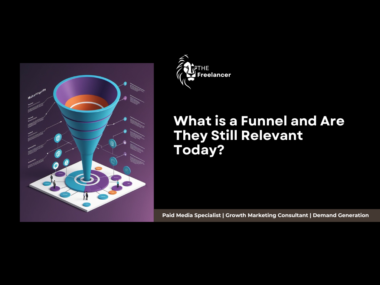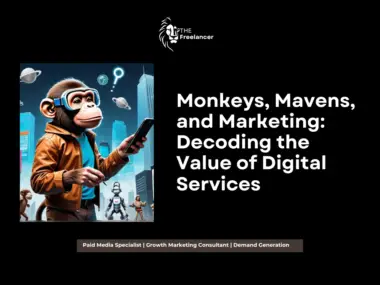In the fast-paced world of digital marketing, statistics are often used as a guiding light for decision-making. However, not all statistics are created equal. While industry benchmarks and go-to stats can provide valuable insights, it’s crucial to understand their context and limitations. This article explores the transferability and relatability of online marketing statistics, especially for B2B companies with long sales cycles. We’ll delve into why context is essential, the importance of historical performance, and how to create your own industry stats.
The Allure of Marketing Statistics
Marketing statistics are everywhere. From blog posts to white papers, these numbers promise to guide marketers toward better strategies and higher ROI. However, it’s essential to recognise that not all statistics are universally applicable. Many of these stats are derived from small sample sizes, specific industries, or particular types of companies, such as Fortune 100/500 firms.
The Pitfalls of Broadly Curated Metrics
Broadly curated metrics often come from surveys of Chief Marketing Officers (CMOs) or large enterprises. While these stats can be insightful, they may not be directly applicable to smaller companies or those in different industries. For example, a statistic about the effectiveness of a particular marketing strategy in Fortune 500 companies may not hold true for a mid-sized B2B firm with a long sales cycle.
Context is King
Understanding the context behind a statistic is crucial. A metric that shows a high conversion rate for a B2C e-commerce site may not be relevant for a B2B company selling complex software solutions. The sales cycles, customer journeys, and decision-making processes are vastly different. Therefore, it’s essential to consider the context in which a statistic was generated before applying it to your own strategy.
The Importance of Historical Performance
While industry benchmarks can provide a starting point, your historical performance is the best measure of success. By tracking and analysing your own data, you can identify trends, understand what works for your specific audience, and make incremental improvements over time.
Marginal Gains: The Key to Continuous Improvement
The concept of marginal gains involves making small, incremental improvements to achieve significant overall performance enhancements. Instead of relying solely on broad industry stats, focus on making daily or weekly improvements based on your historical data. This approach allows you to create your own benchmarks and measure success in a way that’s tailored to your business.
Writing Your Own Industry Stats
By consistently tracking and analysing your performance, you can generate your own industry stats. This data will be far more relevant and actionable than generic metrics. For example, you might discover that a particular type of content performs exceptionally well with your audience, leading to higher engagement and conversions. These insights can then inform your future strategies.
Differentiating Between B2B and B2C
One of the most critical factors to consider when evaluating marketing statistics is whether the data pertains to B2B or B2C companies. The marketing strategies, customer behaviours, and sales processes can differ significantly between these two types of businesses.
B2B Marketing: A Different Beast
B2B marketing often involves longer sales cycles, multiple decision-makers, and a focus on building relationships. In contrast, B2C marketing typically targets individual consumers with shorter sales cycles and more impulse-driven purchases. Therefore, a statistic that shows a high success rate for a B2C email campaign may not be relevant for a B2B company trying to nurture leads over several months.
The Role of Account-Based Marketing (ABM)
For B2B companies with long sales cycles, Account-Based Marketing (ABM) can be a game-changer. ABM focuses on targeting specific high-value accounts with personalised campaigns, rather than casting a wide net. This approach aligns closely with the concept of creating your own industry stats, as it emphasises tailored strategies and continuous improvement.
Tools for Tracking and Analysing Performance
To effectively track and analyse your performance, you’ll need the right tools. Here are some essential tools for B2B marketers:
Customer Relationship Management (CRM) Systems
Examples: Salesforce, HubSpot CRM
Function: Centralise customer data and track interactions throughout the sales cycle.
Marketing Automation Platforms
Examples: Marketo, Pardot, HubSpot
Function: Automate personalised marketing campaigns and track engagement across channels.
Analytics Tools
Examples: Google Analytics, Adobe Analytics
Function: Measure website traffic, user behaviour, and conversion rates.
ABM Platforms
Examples: Demandbase, Terminus, RollWorks
Function: Deliver targeted advertising to specific accounts and measure engagement.
Key Considerations for Your Strategy
When developing your marketing strategy, keep the following considerations in mind:
1. Know Your Audience
Understanding your audience is the foundation of any successful marketing strategy. Conduct thorough research to identify their needs, pain points, and preferences. This information will guide your content creation and campaign planning.
2. Set Clear Goals
Define clear, measurable goals for your marketing efforts. Whether it’s increasing website traffic, generating leads, or closing deals, having specific objectives will help you stay focused and track your progress.
3. Test and Iterate
Continuously test different strategies and tactics to see what works best for your audience. Use A/B testing to compare variations of your campaigns and make data-driven decisions.
4. Focus on Quality Over Quantity
In B2B marketing, quality often trumps quantity. Instead of trying to reach a broad audience, focus on engaging high-value prospects with personalised content and experiences.
5. Align Sales and Marketing
Ensure that your sales and marketing teams are aligned and working towards the same goals. Regular communication and collaboration will help create a seamless customer journey.
Conclusion
In conclusion, while marketing statistics can provide valuable insights, it’s essential to understand their context and limitations. For B2B companies with long sales cycles, focusing on historical performance and making incremental improvements is the best way to achieve success. By tracking your data, creating personalised strategies, and continuously optimising your efforts, you can generate your own industry stats that are far more relevant and actionable than generic metrics.










